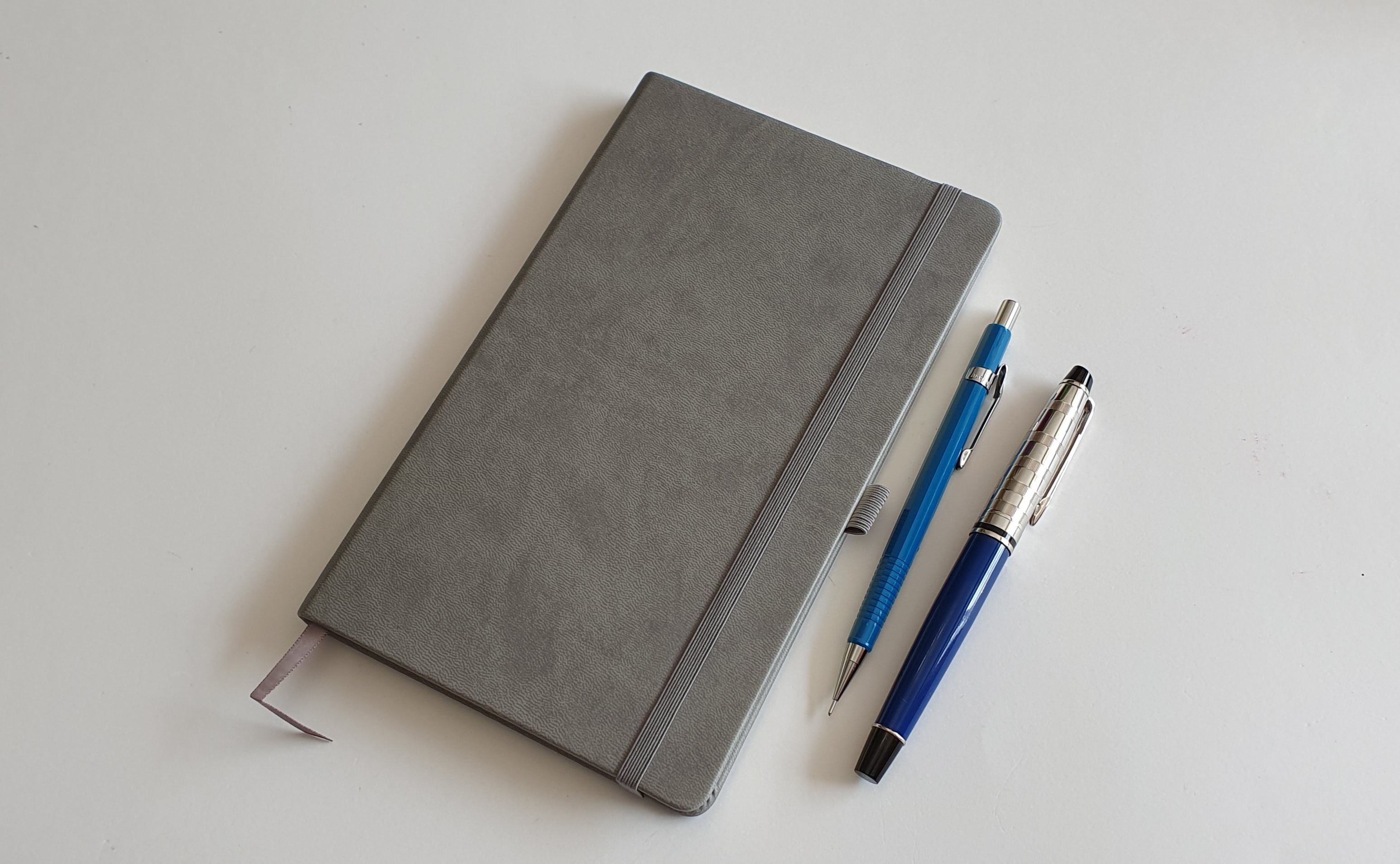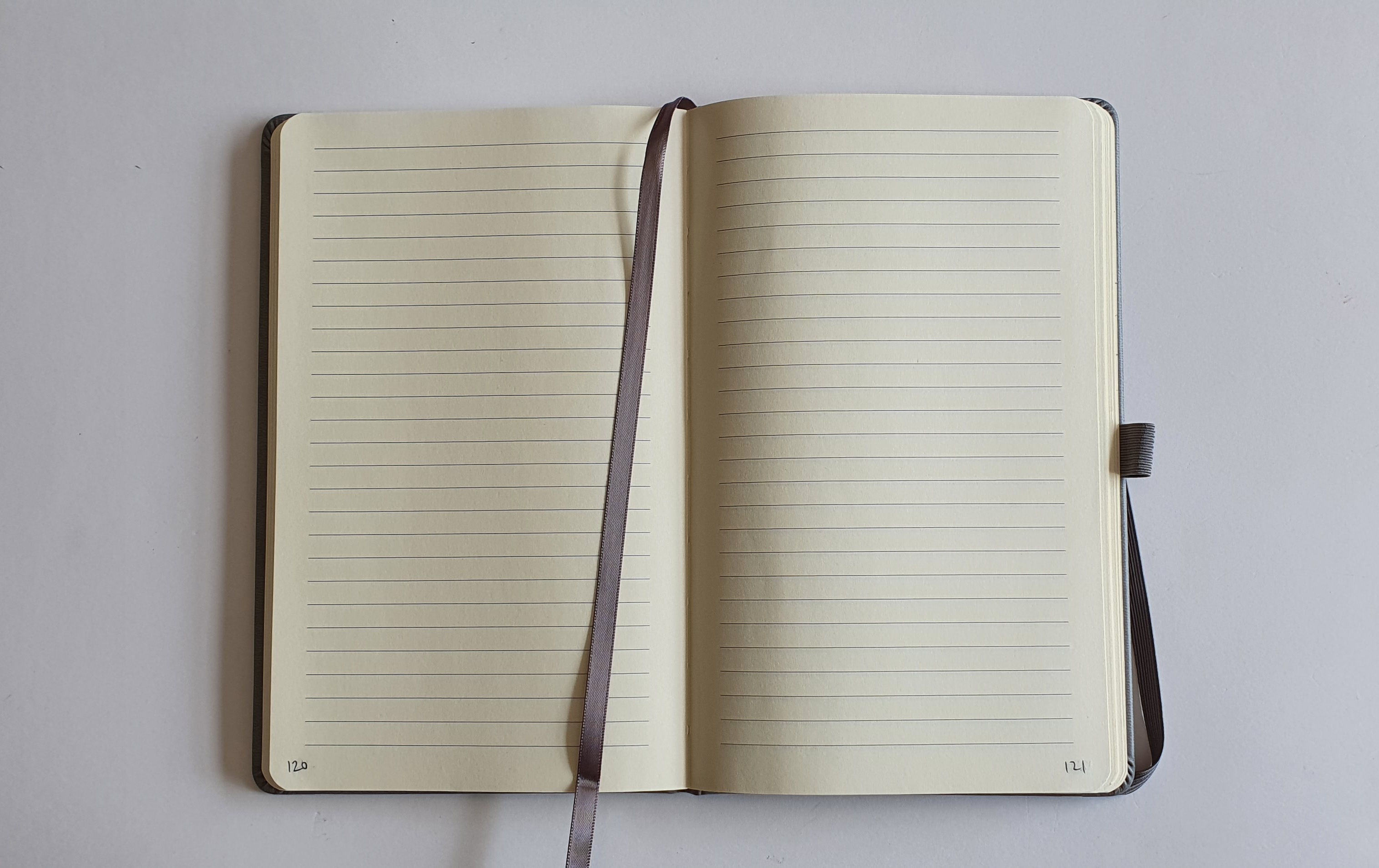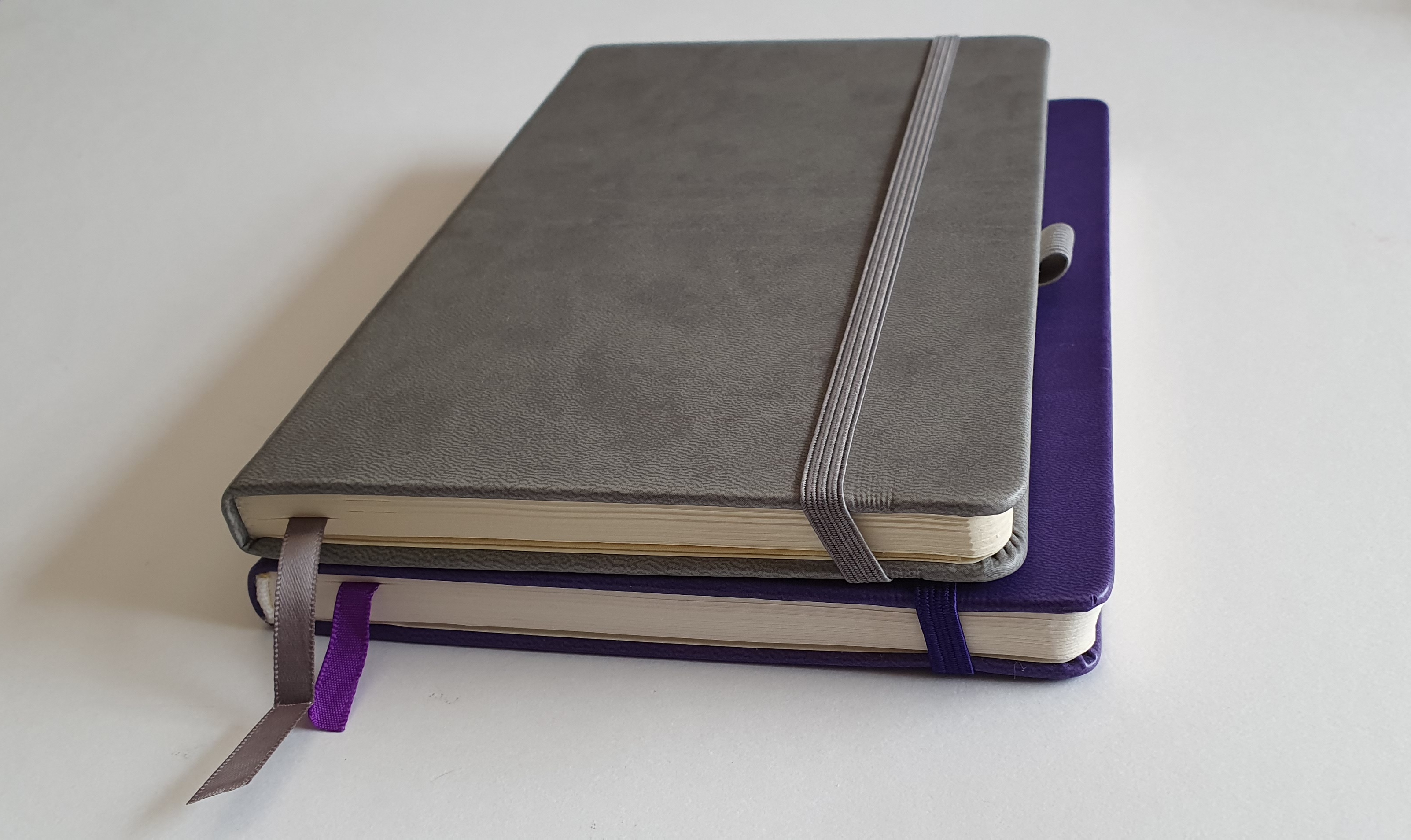Let me begin by saying that I am a big fan of Leuchtturm A5 journals. I like the format, the paper, the quality and the wide range of colours. They are readily available from my local branch of Ryman stationers. Over the last three years, I have filled about ten of them.
The one issue that I have with them, is that the line spacing is a bit too narrow for me. They have versions with dot grids, but these are at 5mm intervals and so would give you either a 5mm row height, which I find too narrow or 10mm if using two rows, which is a bit too wide. About 8mm would be just right. I prefer to buy the Leuchtturm with plain pages and then use a guide sheet or rule my own pencil lines, when and where I want them.
Yesterday, on a visit to Rymans I decided to try one of their own brand journals. Whereas the Leuchtturm journal costs typically around £16.99, the Ryman alternative is just £7.99. Ryman also make a larger one, which is approximately A4 size.

As it is sealed in plastic shrink-wrap, you cannot inspect it fully. The labelling tells you that it has 192 pages of lined, cream, 70gsm paper.
Features.
- 192 pages;
- cream paper;
- 70 gsm paper;
- ruled lines (7mm row height)
- one ribbon page marker;
- expandable pocket in rear cover;
- hardback;
- soft-touch finish;
- a selection of colours;
- stitched binding, (book can be opened flat);
- elastic pen loop.
When they say “soft cover”, this means soft-to-the-touch, not soft as in floppy like a paperback. It is a soft touch hard cover. It has the look and feel of leather.
The pages are not paginated. I did not mind and quite enjoyed paginating the book myself in pencil, especially when reaching the end and finding that I also arrived at 192, rather than, as sometimes happens, having to go back and look for where I had made a mistake.

The colours for the Ryman book included a pastel pink, and a pastel turquoise which did not particularly appeal to me and which I thought would get grubby in time. I chose the grey which seemed the most inoccuous.
The size.
The book is not A5 size and does not claim to be. An A5 page would be 148.5mm wide, by 210mm. This book’s pages are considerably narrower, at around 126mm and so your rows are around 22.5mm (almost one inch) shorter than A5. The page height is 207mm, which is only slightly less than 210mm A5 size. It is about the same as the Moleskine format.
When I compared the Ryman notebook with one that I had bought from the same shop about 7 years ago, I was surprised to see that the old one had much wider pages. I preferred the old one. I cannot see any advantage to the consumer in making the book narrower, except perhaps that it would be easier to fit in a coat pocket. It seems that, like many familiar chocolate bars, products are now being sold in smaller sizes.

The paper quality.
The cream paper, with grey lines, is pleasant enough to write on with a fountain pen. The weight of 70gsm means it is a little on the thin side, and so you can expect some show-through. However it is bleed-through that renders a paper unsuitable for double-sided writing with a fountain pen. I tested a selection of pens and inks from my currently inked pen cups, to see which could be used and which could not.

Those (from my initial test batch so far) that did not exhibit any bleed-through were Aurora blue, Graf von Faber-Castell Cobalt blue, Waterman Serenity blue, Noodler’s black and Platinum black cartridge.
On the other hand, those inks that the paper did not cope with so well, were Waterman Harmonious green, Conway Stewart Tavy by Diamine, Pilot Iroshizuku Yama-budo, and Onoto Meditteranean blue.
I realise that it is not just the ink that determines whether it will bleed through papers, but how wet it is applied, which depends upon the individual pen.
I quite enjoyed sampling a few different pens and inks on the back pages of the notebook to see which I could use without bleed-through. This was no hardship and I anticipate that most fountain pen enthusiasts can find several combinations that work well from their own selections. It may be disappointing if you have a particular ink that you want to use in the notebook and then find that you cannot, or at least that you cannot use both sides of the page. It is necessary to test out the ink first.

Conclusions.
Compared to the Leuchtturm, the pages are smaller, there are less of them, and the paper is less resistant to bleed-through from certain inks. Whilst it might look superficially to be an alternative to the Leuchtturm, (with its elastic closure and expandable pocket), it loses out to the Leuchtturm in size, paper quality and the number of pages.
Still, if you have lots of fountain pens and enjoy writing, then you need notebooks to write in. I shall enjoy using this one. It is not perfect for me. I would prefer that the line spaces were 8mm rather than 7mm and that the page width not been cropped since the last version I bought.
I have in mind to use it to write up some memories, little fragments of life remembered. Sitting down with one pen and one notebook, and one hour of quiet time, is something I find relaxing. Perhaps it is my equivalent of going to the pub for a pint.








